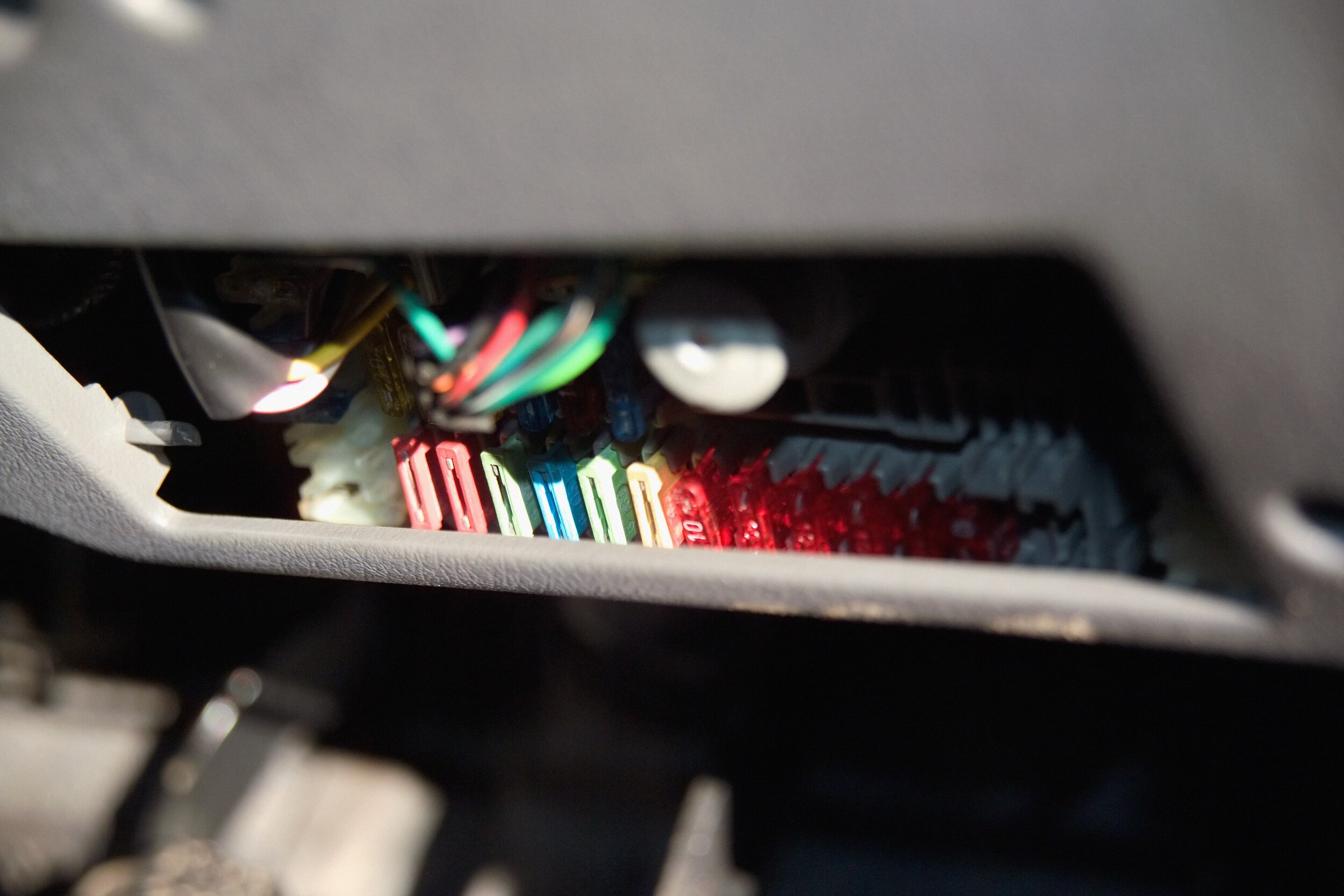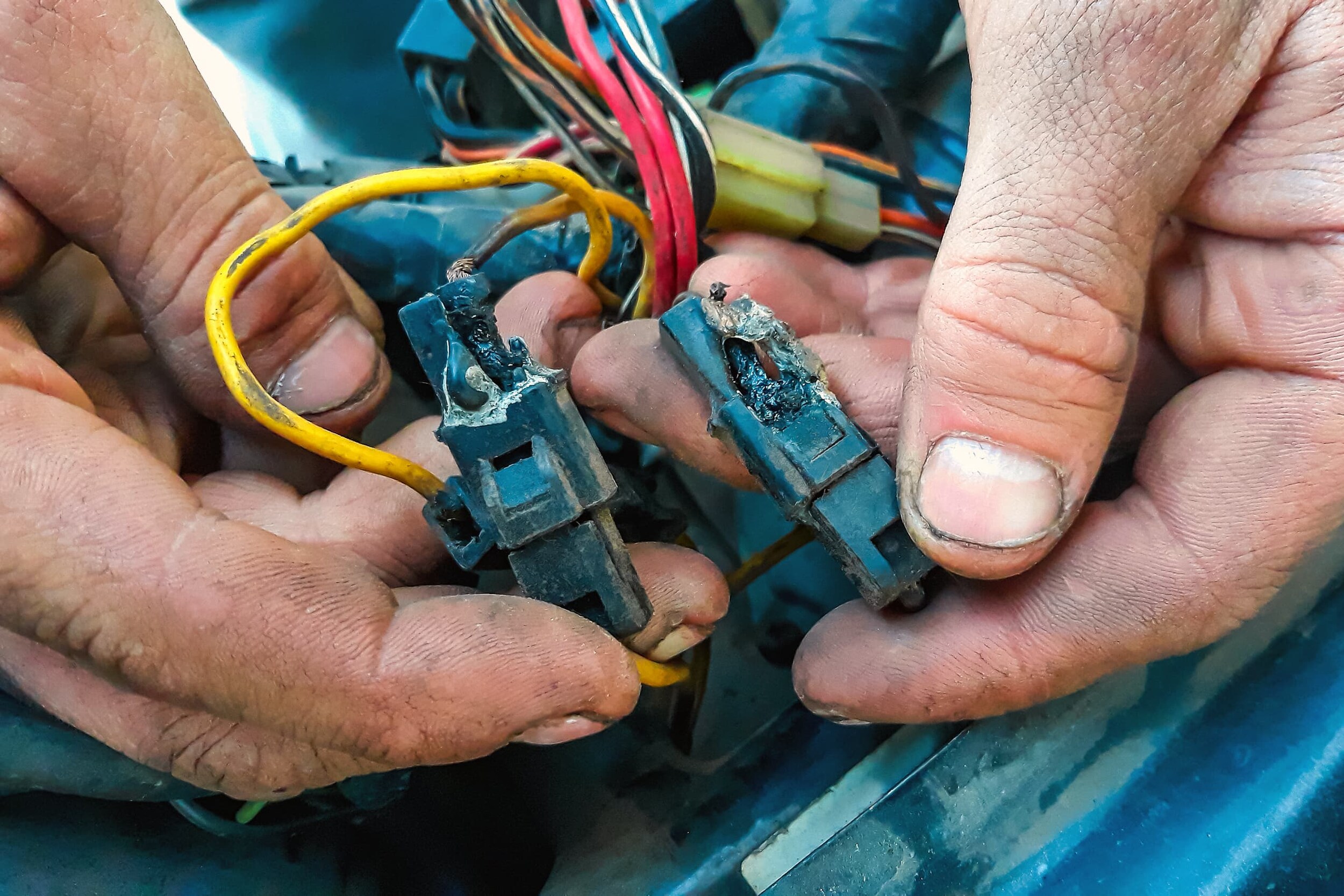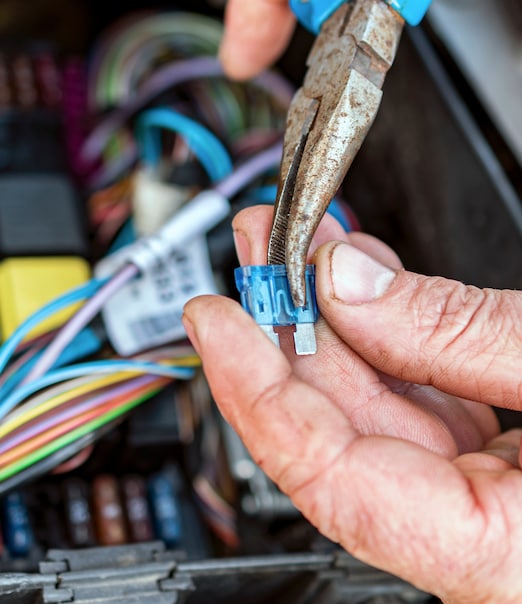
Inspect and Replace Auto Fuses

Confused by Fuses?
Have you ever started up your car and noticed that some of the interior lights aren't working? Maybe the fan in your truck's climate control stops functioning or the turn signals in your SUV are suddenly worthless. If several interior lights stop working at once or the radio suddenly goes out, chances are that one or more of your auto fuses have blown and will need to be replaced. Luckily, this is a quick and easy fix.
Do you know where the fuse boxes are located in your vehicle? Know where specific lights or other electrical device fuses are? Know how to determine if a fuse is blown and how to swap one out for a new one? Well, fear not. Lithia Motors is here to help. Knowing how to change a blown fuse doesn't have to be a mystery with this guide to inspecting and changing auto fuses. Let's get started.
First, Check Your Manual
When interior or exterior lights stop working on your car, chances are that a fuse is the cause rather than the bulb going bad. Your fuses should be the first, and simplest thing to check. First, consult your vehicle's owner's manual on where the fuse boxes are located in your vehicle. Just look up "Fuses" in the table of contents.
In most cars, trucks, and SUVs, there is a fuse box under the hood, at least one fuse box inside the car, generally below and to the left of the steering wheel, and maybe even one under the back seat or in the trunk. After all, most vehicles today are packed with sophisticated electronic goodies such as safety, infotainment, and driver assist features and all those various devices have corresponding fuses.
Your owner's manual should have a diagram and list of where fuses are located and what each fuse controls. For instance, let's say your interior dome light is not functioning. Check the manual to see which fuse box contains the fuses for interior lighting. It is most likely the fuse box below and left of the steering wheel. Sometimes the interior fuse box is below or even inside the glove compartment.

Locating the Fuse
Once you open the cover to the fuse box, use a flashlight to look inside and locate the fuse that controls your dome light. All the small plastic fuses are color-coded, show the amperage of the fuse, and have a clear plastic center that will allow you to see if the fuse is blown. Most vehicles today have a small tool that will let you pull out the fuse in question.
If you don't have such a tool, you can purchase one as well as replacement fuses at your local auto parts store or any Lithia Auto dealership. If you're in a hurry and don't have a fuse puller, a pair of tweezers or needle-nosed pliers will work.
Good? Bad? Broken?
The fuse panel door usually includes a diagram listing each device and the corresponding fuses. The inside of the fuse box door often includes a fuse puller as well as several sizes of extra fuses. Just remember to replace any fuse you use in case you need one later on.
Once you have consulted your owner's manual on which fuse is linked to your dome light, pull that fuse, and shine your flashlight through it. If it is blown, you'll see that the metal bar or wire inside the clear section of the fuse is broken or severed. If that metal link inside the fuse is separated, that fuse is no good. Look at the new fuse that you'll use to replace the bad one and you'll see that the metal link is solid.


Double, Triple Check that Fuse
The new fuse that you'll use to replace the blown one has to be the exact same amperage as the old one.
If you only remember one aspect of this guide, this is the most important part: If you use a fuse with a different amp rating, you risk blowing the new fuse or damaging the equipment in your car that the fuse is designed to protect.
Let's say that you need to replace a 10-amp fuse, but you only have a 5-amp fuse. By replacing that 10-amp fuse with a smaller 5-amp fuse, you will blow the new fuse and be right back where you started. On the other hand, if you were to switch a 10-amp fuse for a 20-amp fuse, it is likely you'll damage the electrical system before the larger fuse can break and save the electrical component.
So, to Recap:
- Use your owner's manual to find the correct fuse box for the system that is not working.
- Determine which specific fuse (they are numbered) controls the item that isn't working.
- Use a fuse puller, tweezers or needle-nose pliers to pull the fuse.
- Examine the fuse to see if it is blown. The metal wire inside the clear plastic section will be severed if the fuse is no good.
- Make sure to replace the fuse with one that matches the same amperage.
- Plug the new fuse right back into the fuse box where the blown one came out. Make sure the new fuse is securely seated in place and then, in this case, check to see if the dome light is working.
Let Lithia Help
If your new fuse blows soon after replacing it, you could have a problem in that circuit. We know our way around electrical problems at Lithia Motors. With over 75 years of experience in personal transportation and over 260 auto dealerships from coast to coast, we're here to service and maintain your vehicle. Find the Lithia Auto dealership near you here and schedule an appointment with our team of ASE-certified auto technicians. We'll have you back on the road quickly and efficiently.


